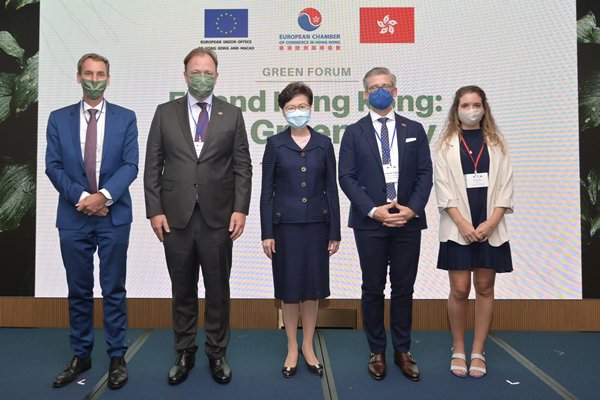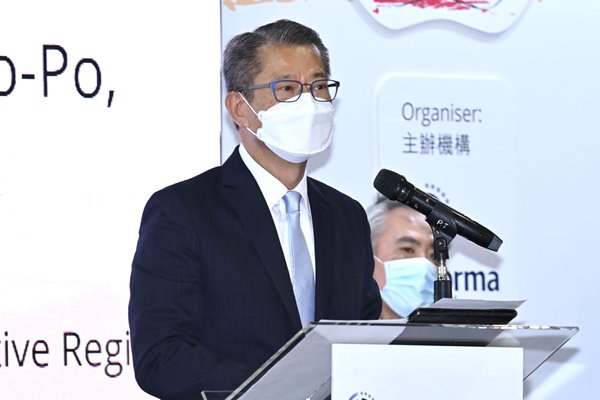
With the adoption of stringent measures to prevent the importation of COVID-19 cases, Hong Kong has successfully prevented imported cases from spreading into the community and maintained zero local infection. As the epidemic situation is clearly under control, Hong Kong people hope that quarantine-free travel between Hong Kong and the Mainland can be resumed so that they may enter the Mainland without being subject to quarantine. I and the entire Hong Kong Special Administrative Region Government have been taking the matter very seriously. The first expert meeting between the relevant authorities of Hong Kong and the Mainland was held in Shenzhen yesterday, with a view to creating conditions for resuming quarantine-free cross-boundary travel.
How the epidemic has developed
Having gone more than 40 days without recording a single local case since August 17, Hong Kong has basically achieved zero infection. In fact, the epidemic situation in Hong Kong has been under control for some time. The handful of local cases identified earlier were either re-positive or exceptional cases where no community infections have occurred as a result. For the imported cases recorded during the past month, all of them were detected upon arrival or during quarantine under the stringent measures to prevent the importation of cases. While these cases did not pose a threat to the community, we dare not take them lightly. Erring on the side of caution, we enforced compulsory testing measures for every confirmed case that had stayed in Hong Kong during the incubation period. Similarly, although the total number of cases worldwide has shown signs of decline recently, hundreds of thousands of cases involving various virus variants are still recorded every day, and with some countries having given up on achieving zero infection, we cannot be too optimistic about the situation.
Anti-epidemic efforts
The current stringent measures to prevent the importation of cases undoubtedly cause inconvenience and difficulties to those who need to return to Hong Kong, but they are indeed necessary. The Government has reacted swiftly to ensure the smooth operation of the measures in general. For example, the Food & Health Bureau has been in constant contact with the governments of different places and has accepted vaccination records issued by many more places as recognised vaccination records, so as to meet the entry requirements. In response to the earnest demand for foreign domestic helpers (FDHs), the Government has also opened 800 units in Penny’s Bay Quarantine Centre on Lantau Island, as an exceptional arrangement for quarantine of fully vaccinated FDHs upon arrival in Hong Kong. As we have explained publicly, the thousands of FDHs should only return to Hong Kong in batches in a gradual manner. Otherwise, should there be many cases of infection, our hospital system may become overloaded. Quarantine units (including the 800 units in Penny’s Bay Quarantine Centre and the 400 units in a designated hotel) were provided in such a way so as to limit the number of arrivals to Hong Kong. I appeal to FDH employers for their understanding. The Labour & Welfare Bureau will closely monitor the situation, consider adjusting the number of quarantine units on the premise of safety, and strive to optimise the booking process.
In addition, we have been actively striving to boost vaccine uptake. The Government, together with our experts, have been constantly explaining the situation and calling on members of the public to get vaccinated, while the business sector and various organisations have provided incentives to encourage their employees and the public to get the jab. As at September 26, the first dose vaccination rate among all eligible people was 66.2%; among those aged 20 to 59, the rate exceeded 70%; and among people aged 40 to 49, the rate even exceeded 80%. However, the vaccination rate among the elderly is still not good enough. Only 40% of the 70 to 79-year-old population, and less than 15% of people over 80 years old have been vaccinated. As the elderly are at a higher infection risk, the current situation can hardly be described as satisfactory. If a new wave of the epidemic arrives, the consequences may be disastrous. We will continue to pursue all methods that can facilitate vaccination of the elderly. We also appeal to all sectors of the community to continue their efforts, such as assisting the Government in promoting outreach vaccination services at the district level.
The major measures introduced are set out here in chronological order:
Date
Event
August 27
The arrangement for distribution of same-day tickets at 24 community vaccination centres (CVCs) (except those run by private hospitals) was expanded to cover students aged 12 or above, and have been further expanded to cover all eligible people who want to receive a COVID-19 vaccination with effect from September 22.
September 8
The Government resumed quarantine exemption for Hong Kong residents returning from both Mainland areas other than Guangdong Province and Macau under the Return2hk Scheme.
September 9
The Government announced that reaching out to the community was a priority of the vaccination programme and thus outreach vaccination services at the community level would be enhanced. Five CVCs would be closed from November while the operation of 21 CVCs would be extended to the end of this year.
September 13
A further $343 million was approved under the Health & Medical Research Fund to support local universities to conduct research studies on COVID-19.
September 15
Non-Hong Kong residents coming from Guangdong Province and Macau could be exempted from compulsory quarantine upon entry into Hong Kong under the Come2hk Scheme. However, in the light of the latest epidemic situation in Macau, all arrivals in Hong Kong from Macau would not be exempted from compulsory quarantine under the Return2hk Scheme or Come2hk Scheme from September 25.
September 15
To balance the risk and benefit, the Scientific Committee on Vaccine Preventable Diseases and the Scientific Committee on Emerging & Zoonotic Diseases under the Centre for Health Protection of the Department of Health recommended people aged 12 to 17 years to receive one dose of the Comirnaty vaccine. The Education Bureau updated the arrangements for whole-day face-to-face classes and related activities.
September 20
The Government opened 800 units in Penny’s Bay Quarantine Centre on Lantau Island for quarantine of FDHs, who have been fully vaccinated in Group A specified places, upon arrival in Hong Kong.
Striving to resume quarantine-free travel with the Mainland
Following the new direction in fighting the pandemic that I announced on April 12, social distancing measures have been relaxed cautiously and gradually and daily life has largely returned to normal. For instance, as estimated by the catering sector, the sales turnover of the catering industry during the Mid-Autumn Festival stood at 90% of the pre-epidemic level. The long-awaited Water World officially opened on September 20, attracting many fun seekers. The Election Committee Subsector Ordinary Elections were held on September 19. Face-to-face classes have been resumed in the new school year. The first school in Hong Kong that had reached a vaccination rate of 70% resumed whole-day face-to-face classes on September 27. All these have been conducted smoothly and in a risk-controlled manner with the implementation of anti-epidemic measures by people in various sectors and members of the public.
After the resumption of normal life, what many residents look forward to most is the resumption of cross-boundary people flow, especially quarantine-free travel with the Mainland. In fact, the inability to resume cross-boundary travel between Hong Kong and the Mainland has a great impact on residents of both places in their daily life, study, family visits, work and business. Some of them even have to be separated from family members for a long period of time. Along with the stabilisation of the epidemic situation in Hong Kong, the implementation of quarantine-free travel with the Mainland is at present our primary goal.
The Return2hk Scheme, which allows quarantine exemption for Hong Kong residents returning from the Mainland, has been operating for a period of time. Also, the Come2hk Scheme, through which non-Hong Kong residents coming to the city are not required to undergo quarantine, commenced on September 15, marking a step closer to quarantine-free travel with the Mainland. On quarantine-free travel to the Mainland by Hong Kong people, I have been continuously reflecting this aspiration to the central authorities for some time, expressing the hope of setting up meetings for communication between experts on both sides as soon as possible to create conditions for quarantine-free travel with the Mainland. The Chief Secretary yesterday led a delegation to Shenzhen, including experts from the Centre for Health Protection and a member of the Government’s Expert Advisory Panel, Prof David Hui, for a meeting with the Mainland ministries and experts. They are proactively following up on the issues raised at the meeting. The Hong Kong SAR Government will spare no effort to achieve its goal.
Chief Executive Carrie Lam issued this article titled Maintaining Zero Infection, Striving to Resume Quarantine-free Travel with the Mainland on September 27.








